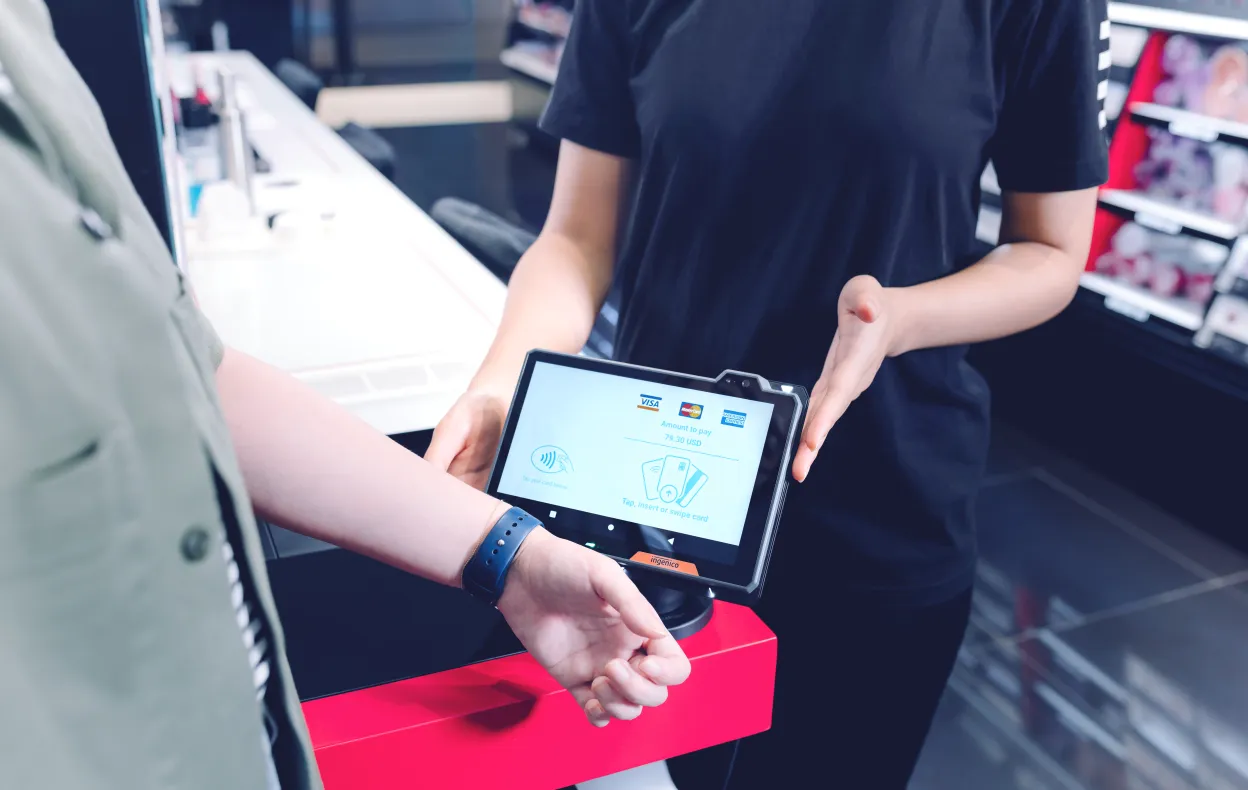Retailers: Gain an Edge from a Payment Technology Refresh in 2025
Listen to this article

The 2020s brought sweeping changes to retail. In the first few years, consumers shopped online, experiencing the convenience, speed, and personalization of ecommerce. Then they enthusiastically returned to stores, with a new comfort with technology and new expectations that digital capabilities would enhance shopping in-store. Retailers committed to providing the best customer experiences — and remaining competitive — are meeting demand by upgrading technology in 2025, including planning a payment technology refresh.
3 Compelling Reasons to Consider a Payment Technology Refresh
Several factors are driving the necessity for retailers to refresh their payment technology in 2025:
- Payment Method Diversity
Cash transactions remain a small fraction of retail payments. However, consumers aren’t using only credit and debit cards to make payments. The value of contactless payment transactions continues to rise, with Juniper Research predicting 113% growth from 2024 to 2029 to reach a value of $15.7 trillion worldwide. Furthermore, consumers are using mobile wallets for more transactions. Precedence Research looks for that market to grow from $8 billion in 2023 to more than $88 billion by 2033, a 27.20% CAGR.
Consumers are also now accustomed to using alternative payments like buy now, pay later (BNPL) when they shop online. The 79 million U.S. BNPL users may appreciate the ability to use that form of payment when shopping in-store, which would require a payment technology refresh for retailers using legacy devices.
- Unattended Payments
Retailers not only need to consider the payment methods their customers prefer but also where they prefer to pay. CapitalOne Shopping reports that 73% of consumers prefer self-checkouts over waiting in line at a traditional point of sale.
A payment technology refresh will allow retailers to offer unattended payments with devices that run on the same platform as their countertop and mobile payment devices. Not only will this strategy simplify management, but it will also ensure consistent customer experiences regardless of how shoppers choose to check out.
- Security
The Payment Card Industry Security Standard Council (PCI SSC) updates PCI PIN Transaction Security (PTS) to strengthen defense against attempts to steal payment card data and to keep up with changing payment technology. PCI PTS v.6, the latest version, includes stronger requirements for cryptography and other measures intended to ensure ongoing protection from evolving threats.
Retailers that don’t use payment technology that meets the latest standard could be at greater risk of data loss and the costs, disruption, and loss of trust that result from a data breach.
Features to Look for When Planning a Payment Technology Refresh
Retailers ready for a payment technology refresh need to start by choosing the solutions’ operating system. Android is emerging as a popular choice because of its flexibility and security. An Android-based payment technology platform enables easy integration and customization, allowing retailers to accept a wide range of payment solutions on the device and even expand the terminal’s capabilities with new features. Android also enables payment device estate management, giving administrators visibility into device status and managing them remotely.
After choosing the platform that will deliver the greatest value, retailers need to select devices designed for their use cases. Countertop payment devices with a space-saving and aesthetic yet durable design are a smart choice for a payment technology refresh. Screens should be large enough to make information easy for all consumers to read, and the device should have processing power and memory so transactions are fast and efficient.
If devices are intended for mobile point of sale (mPOS) use, ensure they have multiple connectivity options and long-lasting batteries. They should also be easy for employees to carry and use as they assist customers inside — or outside — the store.
Unattended payment devices for kiosks and self-checkout should give retailers the flexibility to accept all customers’ preferred payment methods securely, including QR-code-based payments and NFC contactless payments. Unattended payment devices should also easily integrate into kiosk solutions and enable management with the rest of the payment device estate.
Get Expert Advice on a Payment Technology Refresh
A payment technology refresh takes planning to ensure new devices will meet all of a retailer’s needs today and have the flexibility to add new features and adapt to new consumer demands in the future.
Ingenico’s team is available to discuss your current payment device estate and how a payment technology refresh will expand and enhance the payment options you offer in-store. Contact us to learn more.










